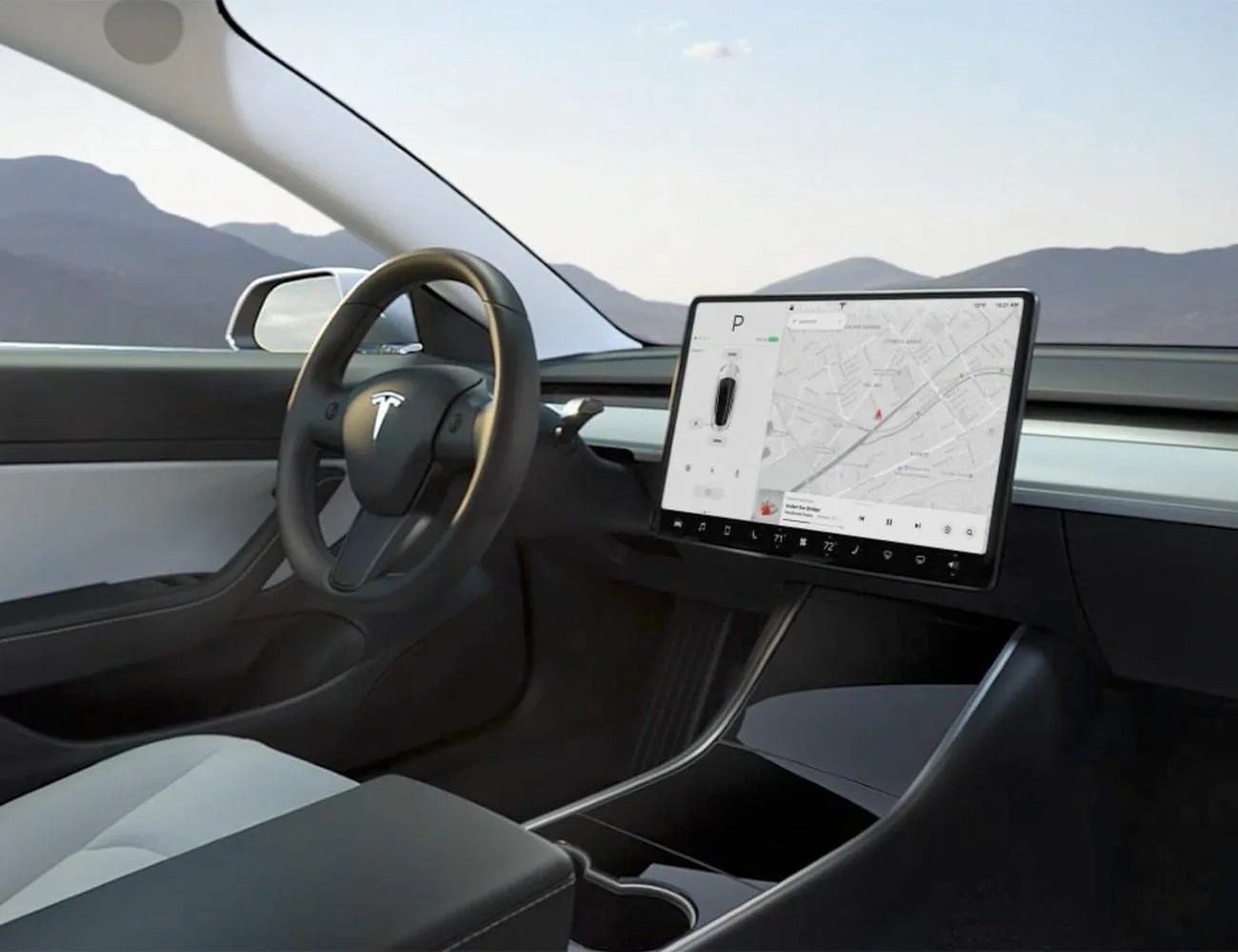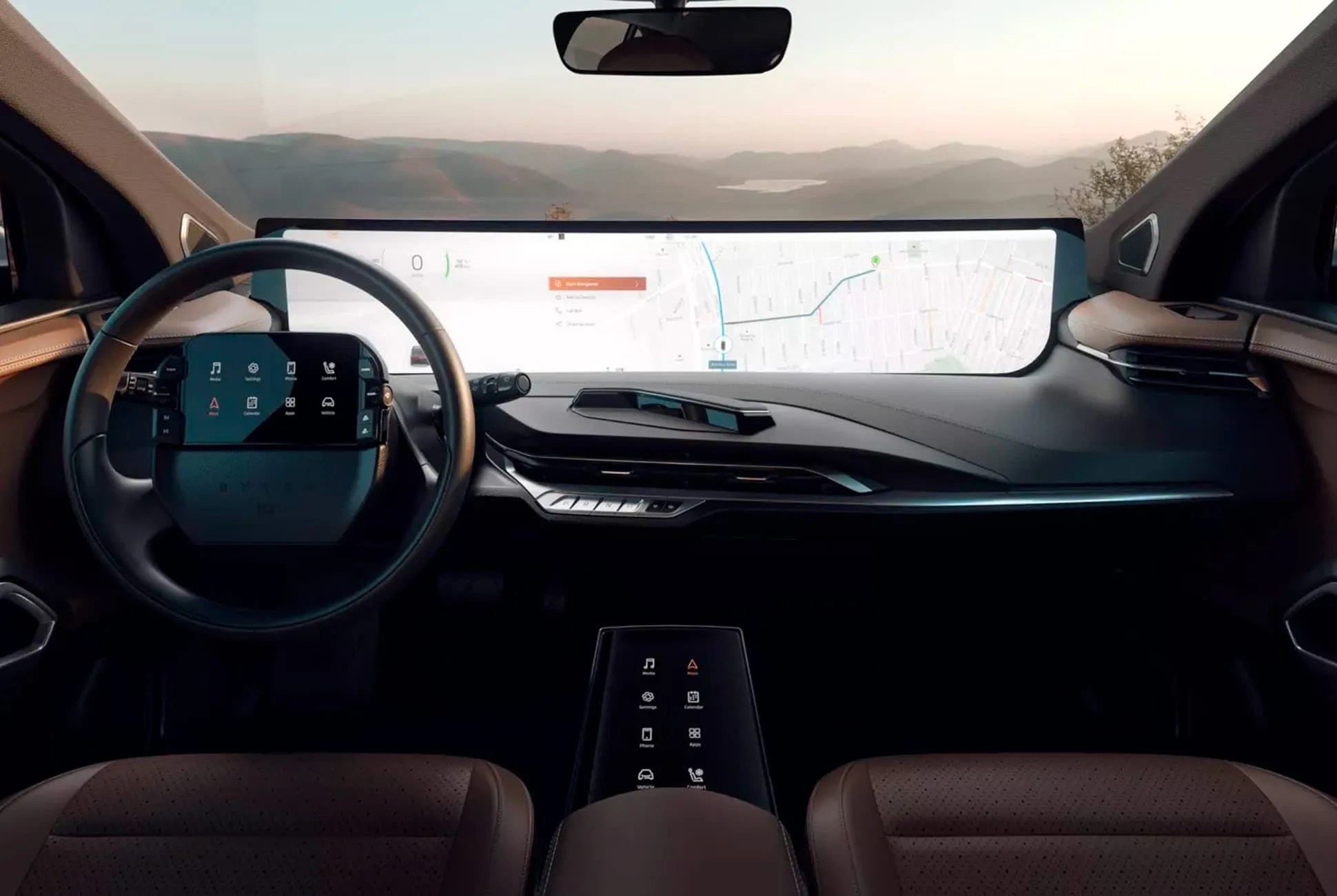Byton wants to “turn the car into the next generation smart device.” At CES 2019, the automotive startup revealed the production-ready version of its “smart intuitive vehicle,” the M-Byte. The car grabbed immediate media attention, not for design or performance, but for its titanic dashboard screen.
The M’Byte’s curved “Shared Experience Display” stretches 48 inches from A-pillar to A-pillar. It’s the width of seven iPads stretched lengthwise. The display dwarfs the 17-inch touchpad in the Tesla Model S. Though, the latter can still send a curated array of fart noises to specific seats.
Because 48 inches was not quite enough screen, the M-Byte will also have touchscreens in front of the steering wheel (7-inch), between the seats (8-inch) and behind the rear seats to manipulate it. The display will also respond to gestures and voice commands. Byton asserts this array of digitalia will distract the driver less than current vehicles.
The 48-inch display sounds like a great leap (forward?). But, it’s more of a natural evolution from where things were heading. The next step from having separate large, customizable digital displays in the center console and behind the steering wheel was to merge them into one bigger screen and maybe throw a bone at the poor passenger.

Screens have been a positive innovation in cars. Rear cameras have made reversing easier and safer. The same goes for porting essential smartphone functions – phone/text, navigation, audio libraries – to the more easily accessed dashboard. If texts could be more easily heard and spoken, they would be a godsend.
But, as we move toward “peak display,” it’s worth asking how much functionality drivers actually need. Was anyone hampered by the analog speedometer? Are these innovations a solution in search of a problem?

